NYC’s Forgotten ‘War on Christmas Trees’
Discover how an obscure holiday crackdown affects festive street vendors today!


Did you know the New York Times has a “morgue”? There are no dead bodies there, but plenty of dead newspaper clippings. It’s hidden on the lowest level of the former New York-Herald Tribune building at 219 West 40th Street. Here, clippings of the New York Times and other publications are organized and filed away by person of interest, topic, and more. It’s an incredible resource that is manned by one man, Jeff Roth, the last of the staff of caretakers at the “morgue.”
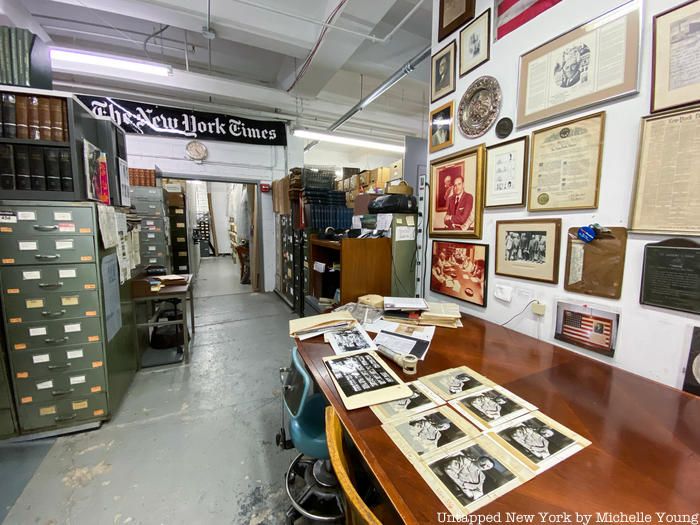
The New York Times moved to Times Square in January 1904 from Newspaper Row and was located in various buildings in the area over the last century. It’s second most recent building was 229 West 43rd Street, which it occupied from 1913 to 2007, until its move to its newest building at 620 Eighth Avenue across from the Port Authority Bus Terminal. When that move happened, the morgue was disconnected from the newsroom for the first time and relocated to the former Herald-Tribune building, several floors below street level. The rest of the Herald-Tribune building is now home to the Craig Newmark Graduate School of Journalism at CUNY (which incidentally has a fabulous collection of vintage typewriters on display).
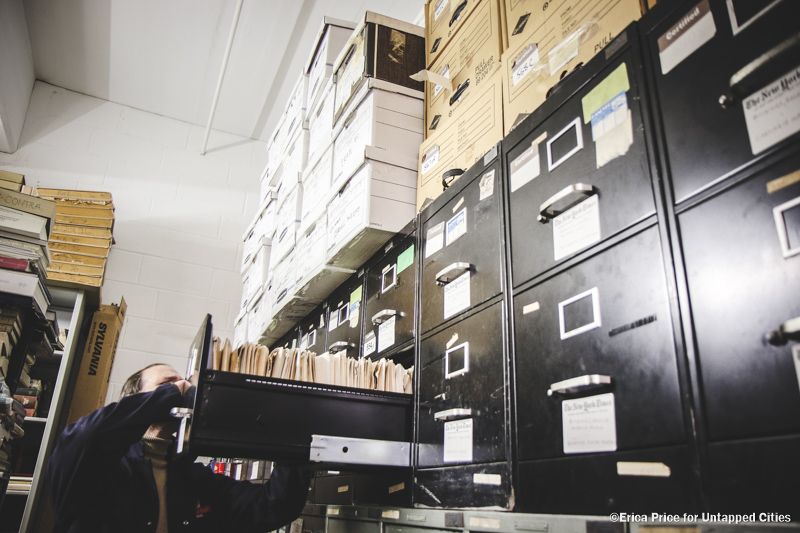
The main reason for the split appears to be because the morgue requires a particular set of architectural features, primarily the ability to withstand hundreds of thousands of pounds of weight. The C-level of the New York-Herald Tribune Building was ideal, as it used to store the rolls of paper used to print the daily newspaper. On a recent visit to the morgue, Roth estimated for us that the morgue contains about 600,000 to 700,000 pounds of paper, filing cabinets and more. “This is Manhattan bedrock,” says Roth, “we’re below sea level, so we’re deep. We’re so deep, I can hear the new subway, the 7.”
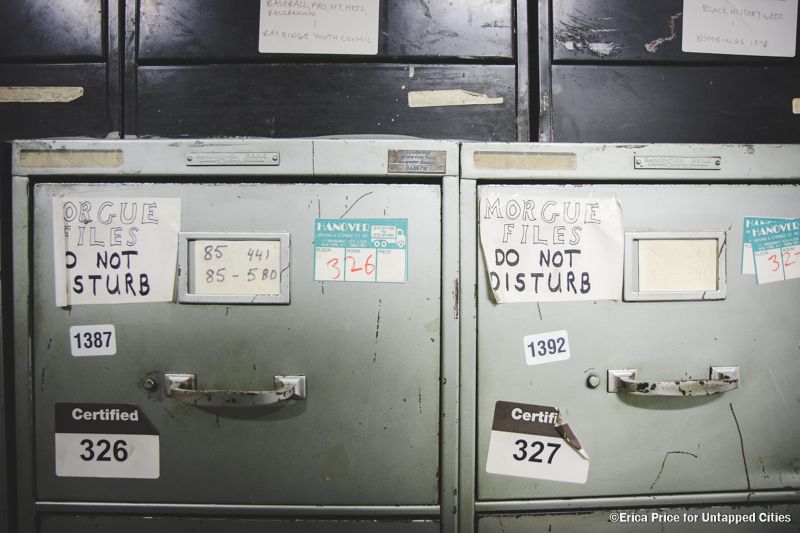
Roth tells us that the earliest clippings in the morgue date to the late 1870s and clippings were once cut out from 28 different publications, magazines, scientific publications, and foreign policy publications. The morgue would require dozens of copies of the publications, because a single article would be filed in numerous places: by the authors, by location, and more. Roth says, “we had 36 copies of The New York Times each day.”
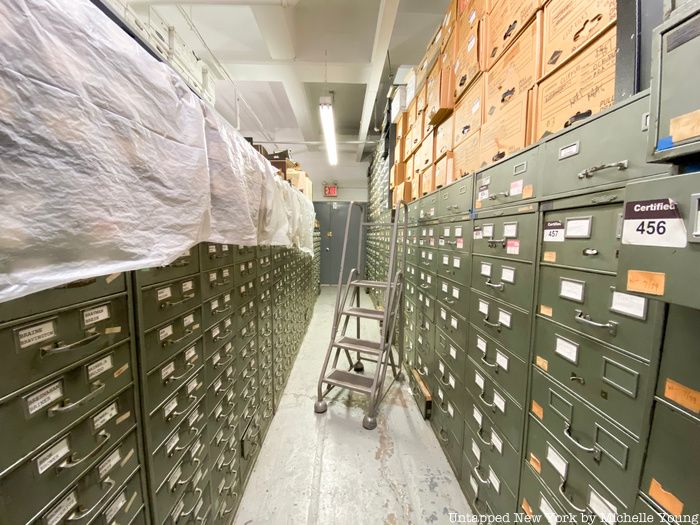
The filing process operates somewhat like the old Dewey Decimal system, with a central series of filing cabinets organized alphabetically. Find your subject amongst the index cards inside, and it provides you the number to another filing cabinet with the clippings for that person, place, or event.
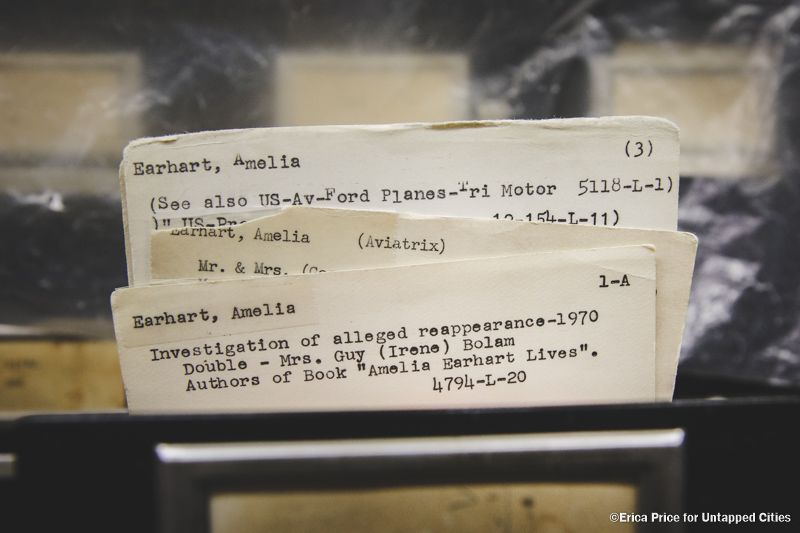
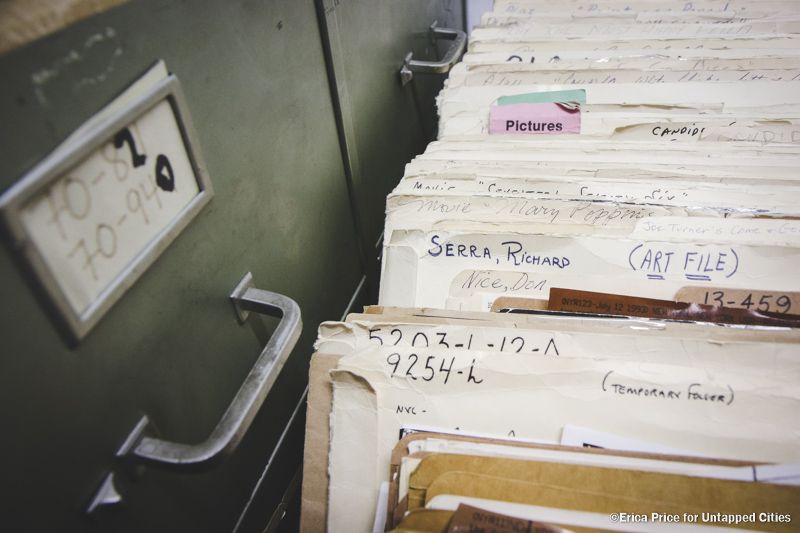
The parlance of calling it the morgue “starts sometimes in the 1800s,” says Roth, “What would happen is you do a story, and you cut it out of the newspaper, and then you put it in a drawer and file it away. And then you had a bunch of drawers that had a bunch of stories. So once they had a whole bunch of drawers, they said, ‘Oh, it’s kind of like a morgue.’ You know, you have a bunch of dead drawers — it was always called the dead drawer.”
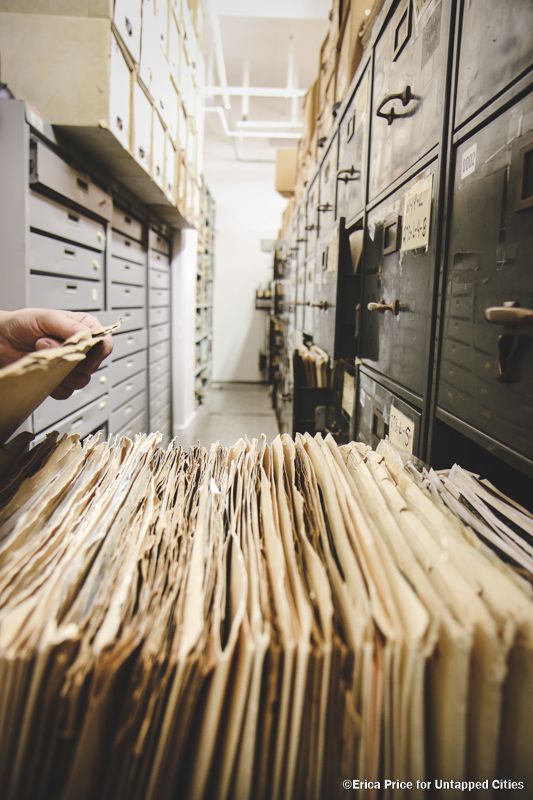
Roth ended up at The New York Times in 1993 by accident, working before in transportation at the airports. A friend ended up getting a job at the morgue and Roth joined the team that was 20 large at the time. He is humble, contending that it there’s “not much brains” to what he does, but he’s clearly proud of his stewardship of the morgue and the discoveries he gets to make every day. He’s cognizant of what role the morgue plays and the vast amount of undiscovered information inside.
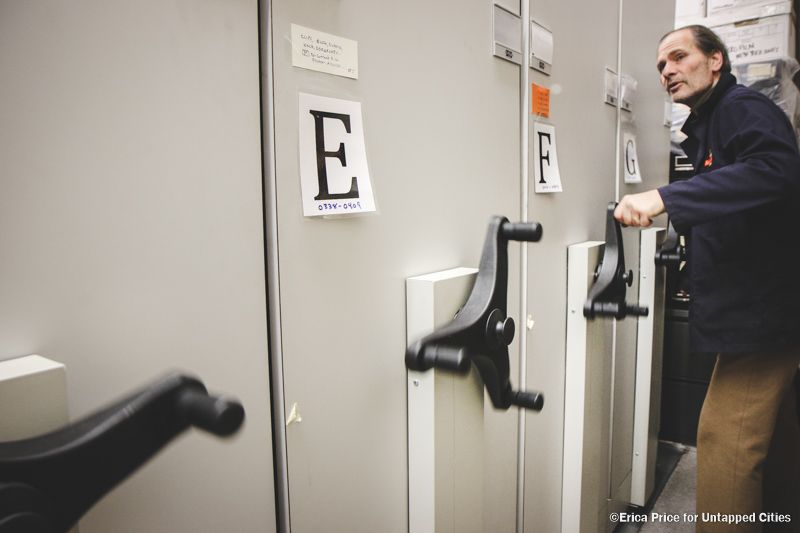
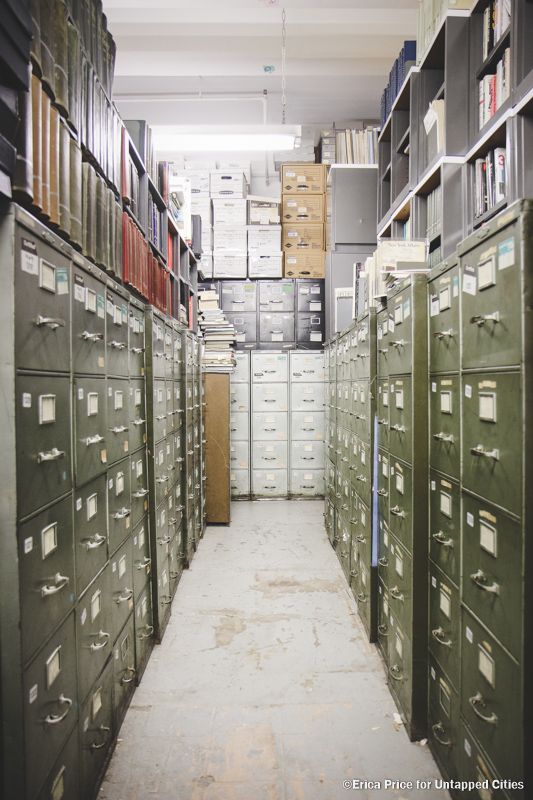
The morgue even holds newspaper stories that might not have made it to the New York Times digital archives because the early edition papers were not put on microfilm or digitized, just the late edition was. One example he showed us was a “lost” story of Ralston C. Young, the “Red Cap” preacher of Grand Central which we delved into for a story after our visit. If you search the New York Times archive, the first appearance for Young is in 1952 because the 1948 story was never microfilmed or digitized because it appeared in the early edition. If you look at the version stored in the morgue, it is stamped in red, “KILLED 1ST EDITION” “You would not be able to find that online,” Roth explains, “That’s probably the only copy in the world.”
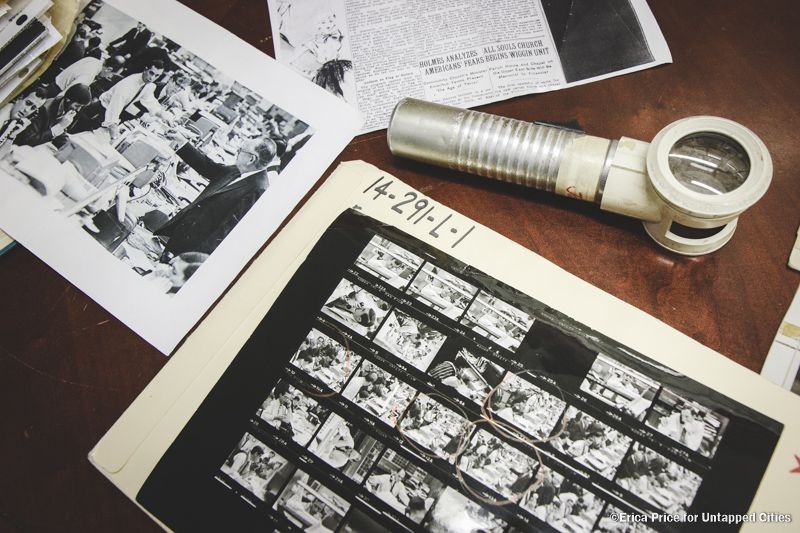
Contact sheet showing a young Michael Bloomberg
Other times, Roth comes across new information that was hidden in clippings filed for other topics. He was recently going through a folder on England’s monetary devaluation of the pound in 1967 and caught a small detail within a photograph of the Solomon Brothers trading floor: it was a young Michael Bloomberg. We peered with a microscope at the contact sheet of photographs showing Wall Street’s reaction to the devaluation, and indeed there he was. Bloomberg only worked for Salomon Brothers that summer and he is not mentioned in the contact sheet because he was not well-known when the item was filed. But Roth knew that Bloomberg worked there for that short period and checked the photographs. The Times then verified with Bloomberg himself that it was him in the photos.
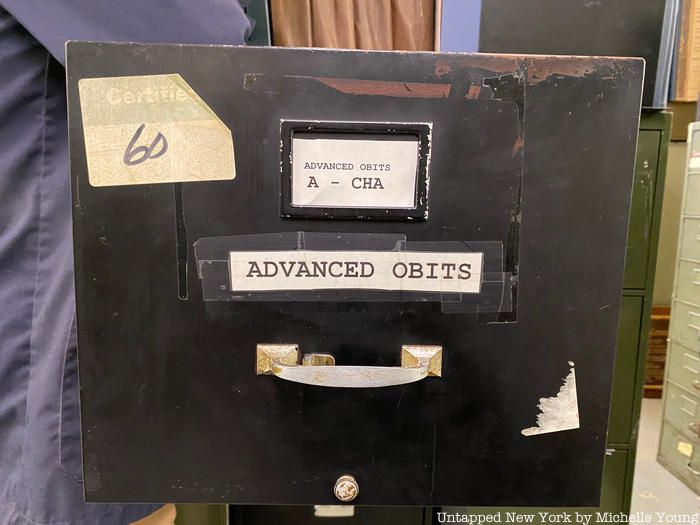
One of the most known uses of the morgue is for writing obituaries, and if you saw the award-winning documentary Obit from director Vanessa Gould, you would have seen Roth on the big screen. With its century and half long repository of newspaper clippings, organized meticulously, the morgue is the most efficient way to write an obituary. If you’ve ever wondered how The New York Times can publish an obituary so soon after someone passes, it’s thanks to the morgue and its process of writing advance obituaries. In fact, there are two filing cabinets of “Advanced Obits” alphabetically arranged, written up with proposed layouts. We can’t share who is in there, but let’s just say, it’s extensive.
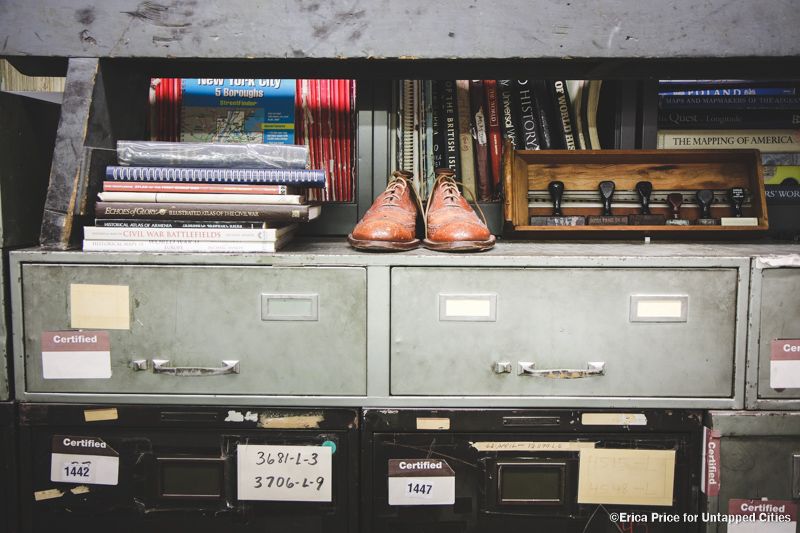
Wooden bench from old New York Times building, shoes gifted by Bill Cunningham, and stamps
Other amazing finds inside the morgue? Some of the original furnishings from the New York Times’ West 43rd Street building , including wood benches from the old press room were salvaged by Roth and his former colleagues. There is a pair of s
hoes that street photographer Bill Cunningham gave to Roth (who says Bill found them in the garbage, they weren’t worn by Bill). There are also the original stamps used on the clippings, old cameras sitting in baskets, and more.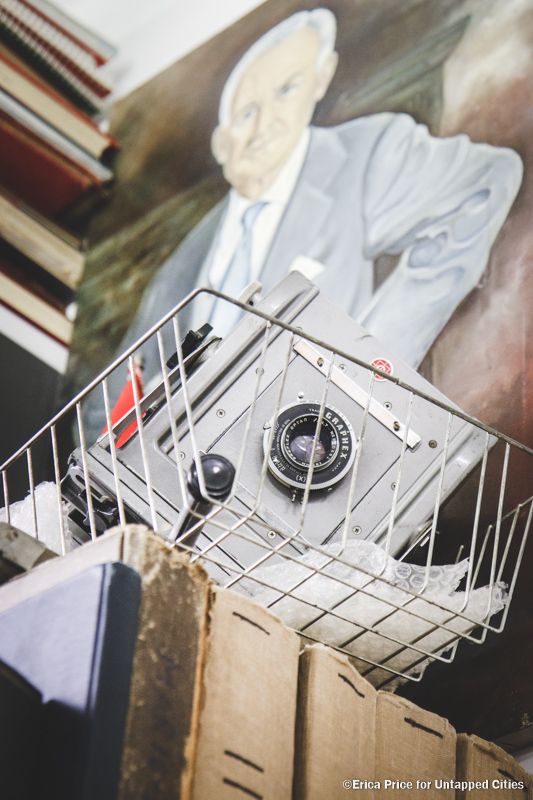
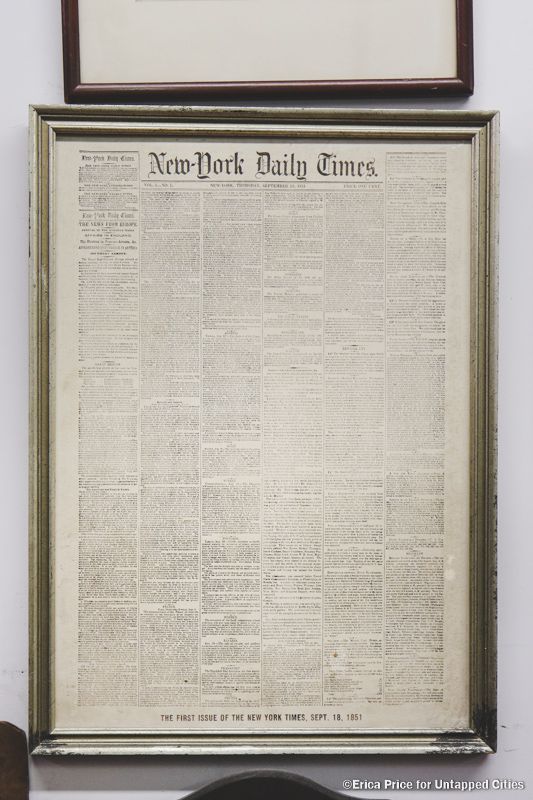
Amongst the publications in the morgue, you will also find a reproduction of the first issue of the New York Times from 1851, along with bound “rag’ editions of the New York Times. These were printed on linen, which means the paper will not turn brown like regular newspaper. “There’s no wood pulp in this which is what deteriorates,” explains Roth, “so this is stable for a thousand years.” In 1935, the rag edition would have cost about $300 a year, which could be about $5000 a day, says Roth. Rag editions were usually purchased by institutions like banks, colleges, and libraries, but once microfilm became more ubiquitous, the New York Times stopped producing them.
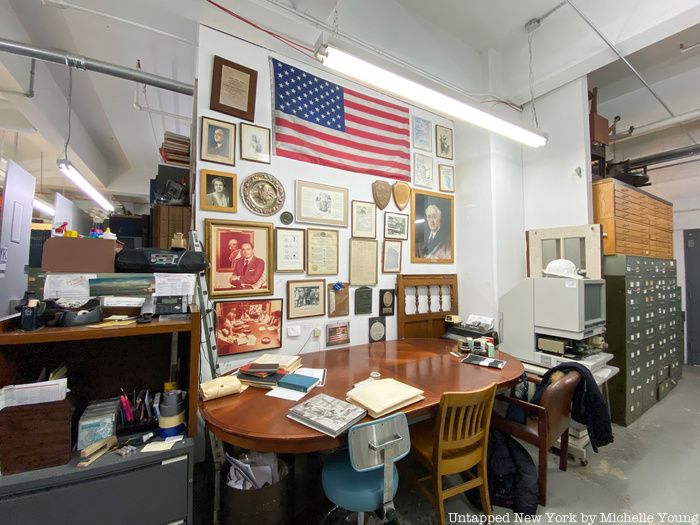
Unless you’re a researcher, photo editor, or writer for the New York Times, a visit to the morgue is hard to come by. Roth occasionally gives tours to subscribers or notable figures, but it’s not open to the public. A researcher who wants to use the morgue would need to pay $250 an hour.
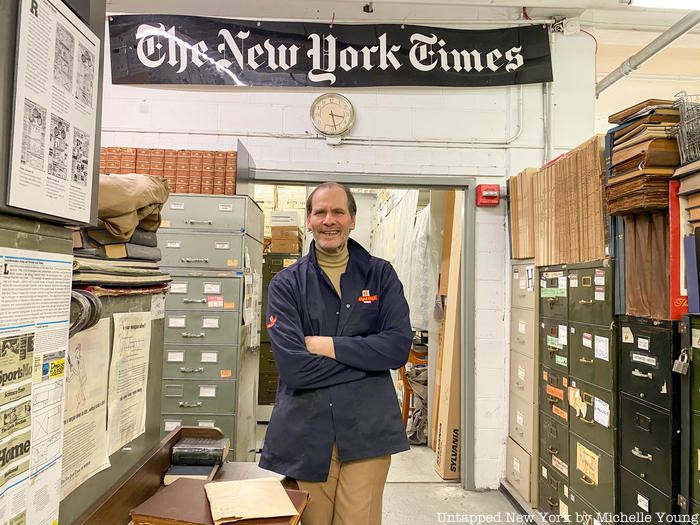
When asked whether Roth is sentimental about the morgue, he answers: “I could walk out tomorrow. You know, I’d think about it. But I didn’t come mean to come here, intending to do this. So it’s different than some guy who is like, ‘Hey, I want to work at the New York Times, I want to be a journalist.’ I didn’t come here doing that. I like it. I seem to do a good enough job at it. But my strength is that I’m orderly. So I can keep order. And so this space that could be chaotic is orderly. Generally. But again, I just ended up here. It happened to be.”
Join us for an upcoming tour of the Brooklyn Academy of Music archives!
Next, discover the incredible archives inside the Division of Old Records.
Subscribe to our newsletter